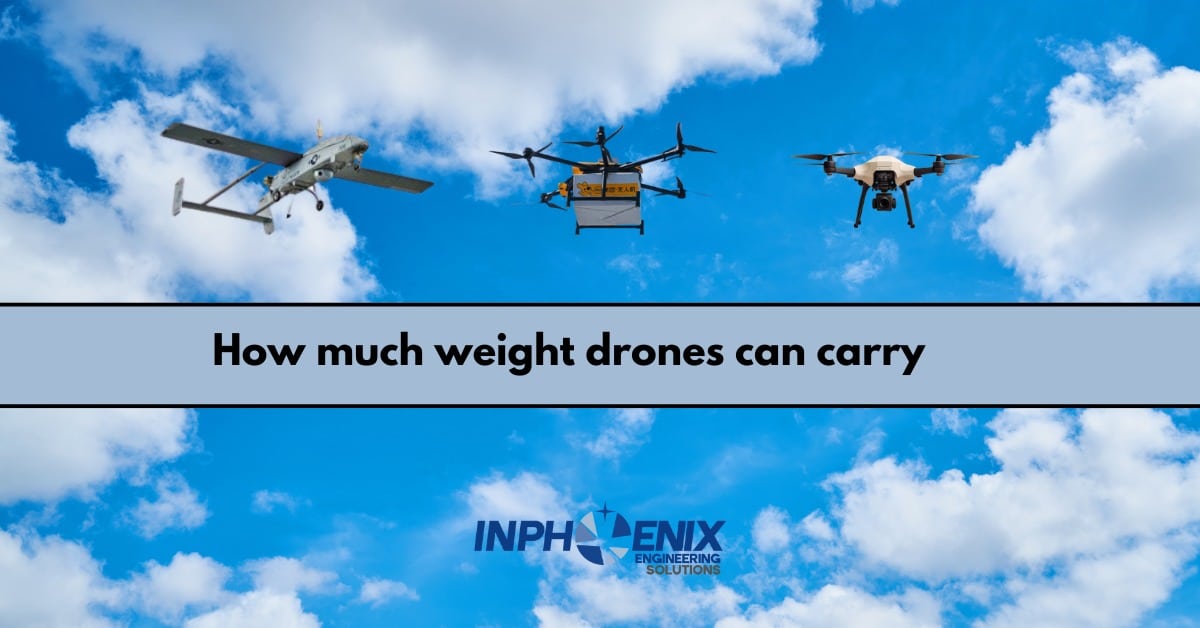Drones, also known as unmanned aerial vehicles (UAVs), have become ubiquitous in both consumer and commercial landscapes. Their applications range from aerial photography and videography to package delivery and agricultural monitoring. One critical aspect that dictates the usability and applicability of a drone is its payload capacity—the weight of the cargo it can carry safely. Understanding this can help you choose the right drone for your needs or innovate within your business to utilize drones effectively.
What Determines a Drone’s Payload Capacity?
Before delving into the specifics of different drone types and their capacities, it's crucial to understand what influences a drone's ability to carry weight:
- Motor Power and Design: The thrust-to-weight ratio plays a vital role. Drones with powerful motors and a robust design can lift more weight, which is crucial for carrying additional equipment or cargo.
- Battery Life: Additional weight requires more power to maintain flight, which can significantly drain battery resources. Thus, the battery capacity directly influences how much weight a drone can carry and for how long.
- Material and Build Quality: Drones built with lightweight yet strong materials can carry more weight relative to their own body weight, enhancing their payload capacity without compromising flight dynamics.
- Propeller Size and Efficiency: Larger and more efficient propellers can generate more lift, a necessity for increasing payload capacity.
Categories of Drones by Payload Capacity
To better understand the range of available options, let’s break down drone types by their typical payload capacities:
Consumer Drones
Consumer drones are primarily used for photography and videography. Drones like the DJI Mavic series or the Phantom series fall into this category. They usually have a payload capacity of around 0.3 to 2 kilograms (about 0.7 to 4.4 pounds). This range is sufficient to support a camera and possibly a few other lightweight accessories, perfect for amateur or semi-professional aerial shots.
Professional Drones
Moving a step up, professional drones are used for more serious commercial applications. These include drones used in filmmaking, agriculture for crop monitoring, and industrial inspections. Professional drones can typically support 2 to 10 kilograms (about 4.4 to 22 pounds) of weight. This allows them to carry higher-quality cameras, multiple sensors, and other specialized equipment necessary for detailed and high-stake tasks.
Cargo Drones
Cargo drones are designed specifically for transporting goods and are pivotal in the emerging sector of drone delivery. These drones vary greatly in size and capacity, carrying anywhere from 10 kilograms (about 22 pounds) to 100 kilograms (about 220 pounds) or more. Companies like Amazon and UPS are experimenting with these drones to revolutionize logistics, particularly for last-mile deliveries.
Military and Custom-Built Drones
At the high end of the spectrum, military and custom-built drones can carry substantial loads, including heavy equipment and weaponry. Some of these drones can lift several hundred kilograms, similar in capacity to small manned aircraft. These are highly specialized and are designed with specific missions in mind, such as surveillance, combat, or heavy-duty transportation.
Real-World Applications and Considerations
The payload capacity of a drone directly impacts its practical applications:
- Aerial Photography and Filmmaking: Filmmakers need drones that can carry high-quality cameras and stabilizing equipment to capture cinematic footage.
- Agriculture: Drones used in agriculture may need to carry sensors and occasionally distribute payloads like seeds or fertilizers.
- Delivery Services: As the interest in drone deliveries heats up, understanding the payload limits is crucial for logistics planning. Drones need to be powerful enough to carry packages over considerable distances while being energy efficient.
- Emergency and Healthcare Services: Drones are being used for rapid delivery of medical supplies and equipment in disaster zones and remote areas. These applications require reliable payload capacity without sacrificing speed or flight time.
Choosing the Right Drone
When choosing a drone, consider the following:
- Assess Your Needs: Understand the specific tasks you want the drone to perform and the weight of the equipment you need to carry.
- Check Manufacturer Specifications: Always check the manufacturer’s specifications for payload capacity to ensure the drone can handle your intended load without compromising safety or performance.
- Consider Regulatory Restrictions: Be aware of legal restrictions regarding drone operations, which can include limits on the size, weight, and capabilities of drones, especially in urban or populated areas.
The structural design of the drone also plays the critical load in determining how much weight drones can carry. Learn how to calculate wing load capacity on different drone wings.
InPhoenix Aviation: Tailored Drone Solutions
InPhoenix Aviation stands out in the drone industry by offering custom-built drones designed around the specific payload requirements of their clients. This bespoke approach ensures that each drone is not just a tool but a tailored solution optimized for its intended tasks. Here’s why a partnership with InPhoenix Aviation can be beneficial:
- Customization to Fit Specific Needs: Whether for cinematography, agriculture, or cargo delivery, InPhoenix can design drones that carry the exact weight required by the equipment or cargo, paired with the optimal configuration for efficiency and reliability.
- Advanced Design Capabilities: Leveraging cutting-edge technology and innovative design, InPhoenix creates drones that maximize payload capacity without compromising the drone’s agility and performance.
- Integration with Existing Operations: For businesses looking to integrate drones into their operations, InPhoenix ensures that each UAV solution is compliant with industry standards and tailored to integrate seamlessly into existing workflows.
Conclusion
The evolution of drone technology continues to push the boundaries of what these remarkable machines can carry. From lightweight cameras to substantial commercial payloads, drones are becoming an indispensable tool across industries. Whether you're a hobbyist or a professional, understanding the payload capacity of your drone ensures optimal performance and expands the possibilities of what you can achieve. Keep in mind the balance between payload, battery life, and flight capabilities to make the most out of this exciting technology.

